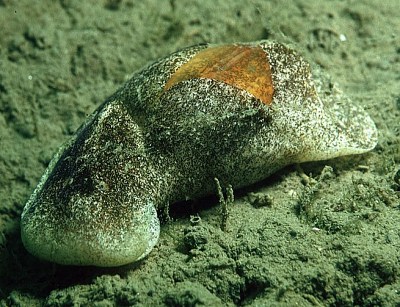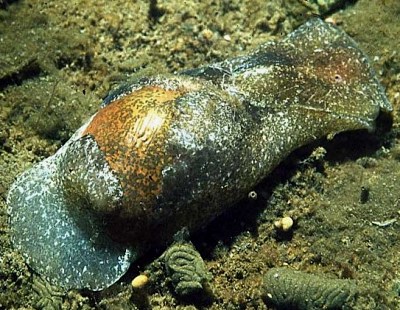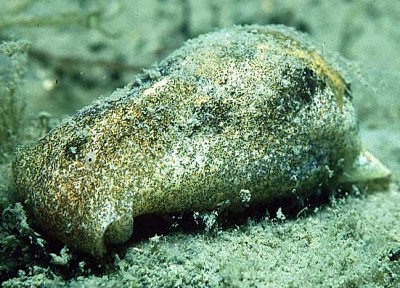

Haminoea navicula
(Costa, 1778)
Order: CEPHALASPIDEA
Superfamily: HAMINOEOIDEA
Family: Haminoeidae
DISTRIBUTION
Ireland to the Mediterranean
PHOTO
UPPER: Portmagee Channel, Valentia Is, Co Kerry, SW Ireland - May 1995
LOWER: Mulroy Bay, NW Ireland - March 1980. PHOTOS: Bernard Picton
Inflated fragile shell grows to about 30mm and body length to about 70mm. The shell is largely hidden by the large parapodial lobes and the posterior pallial lobe. It is usually found in sheltered mud or muddy sand habitats, especially Zostera beds.
Compare with Haminoea hydatis.
References:
• Thompson, T.E. (1976) Biology of Opisthobranch Molluscs, Vol 1. Ray Society: London.
• Thompson, T.E. (1988) Molluscs: Benthic Opisthobranchs. 356pp. Synopses of the British Fauna (New Series) No. 8. E.J.Brill & W. Backhuys: Leiden.
Rudman, W.B., 2001 (February 13) Haminoea navicula (Costa, 1778). [In] Sea Slug Forum. Australian Museum, Sydney. Available from http://www.seaslugforum.net/find/haminavi
Related messages
Haminoea navicula? from southern France
December 16, 2001
From: Erwin Köhler

Dear Bill,
Here is a Haminoea from southern France by Jean-Pierre Bielecki
Email: bielecki.jeanpierre@free.fr
data: May 14th 2001,
Sete, Mediterranean France. depth: 5m, size: 2cm
Erwin
Erwin@medslugs.de
Köhler, E., 2001 (Dec 16) Haminoea navicula? from southern France. [Message in] Sea Slug Forum. Australian Museum, Sydney. Available from http://www.seaslugforum.net/find/5800Dear Erwin,
I should wait for someone with local experience to identify this species, but from Bernard Picton's message I would think this is probably Haminoea navicula. Any opinions gratefully received
Best wishes,
Bill Rudman
Haminoea navicula in the British Isles
February 15, 2001
From: Bernard Picton


Hi Bill,
Here are a couple of pictures of Haminoea navicula. I'm fairly certain that the picture from France is of Haminoea hydatis. The pigmentation is different and the relative size of the parapodial lobes and cephalic shield look more like H. hydatis as described in Thompson. The posterior edge of the cephalic shield in H. navicula seems to be held clear of the shell whilst the photos of the French specimen shows a cleft shield pressed onto the shell, with the parapodial lobes clearly outside this. I note Thompson says the cleft shield and smaller parapodial lobes cannot be relied on to separate the species (? implying that older descriptions use these characters?) I've never seen H. hydatis myself.
UPPER PHOTO: Portmagee Channel, Valentia Is, Co Kerry, SW Ireland - May 1995
LOWER PHOTO: Kilmakilloge Harbour, Co. Kerry, Ireland - June 1984
Bernard Picton
bernard.picton.um@nics.gov.uk
Picton, B. , 2001 (Feb 15) Haminoea navicula in the British Isles. [Message in] Sea Slug Forum. Australian Museum, Sydney. Available from http://www.seaslugforum.net/find/3804Thanks Bernard,
The difference in relative size of parapodia is quite marked in these two species. I have made a Haminoea hydatis page for the Jean-Pierre's animals.
Bill Rudman
